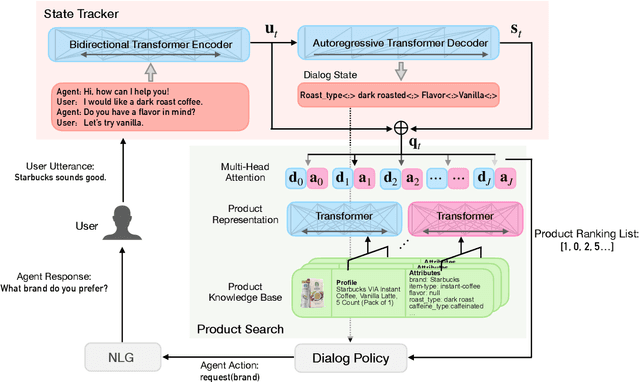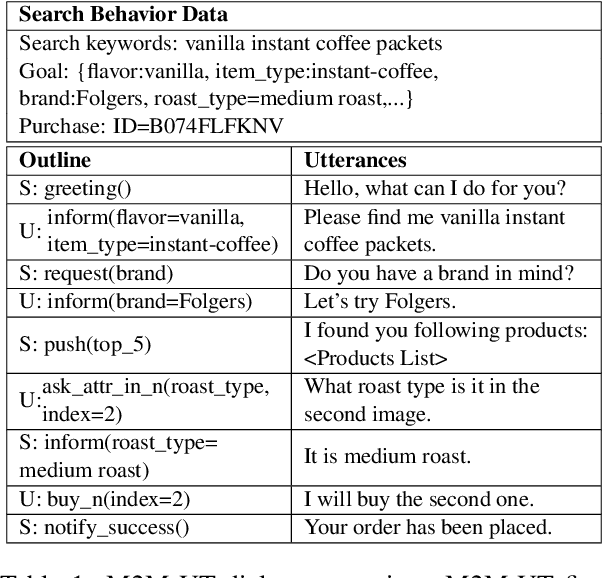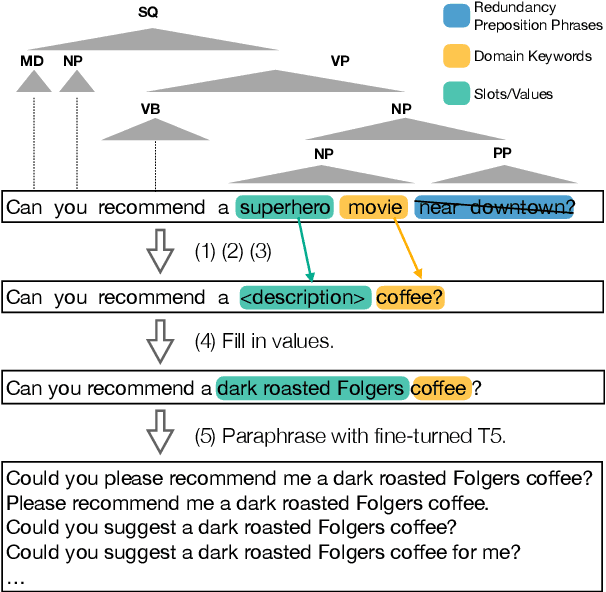Pascual Martinez-Gomez
End-to-End Conversational Search for Online Shopping with Utterance Transfer
Sep 12, 2021



Abstract:Successful conversational search systems can present natural, adaptive and interactive shopping experience for online shopping customers. However, building such systems from scratch faces real word challenges from both imperfect product schema/knowledge and lack of training dialog data.In this work we first propose ConvSearch, an end-to-end conversational search system that deeply combines the dialog system with search. It leverages the text profile to retrieve products, which is more robust against imperfect product schema/knowledge compared with using product attributes alone. We then address the lack of data challenges by proposing an utterance transfer approach that generates dialogue utterances by using existing dialog from other domains, and leveraging the search behavior data from e-commerce retailer. With utterance transfer, we introduce a new conversational search dataset for online shopping. Experiments show that our utterance transfer method can significantly improve the availability of training dialogue data without crowd-sourcing, and the conversational search system significantly outperformed the best tested baseline.
Acquisition of Phrase Correspondences using Natural Deduction Proofs
Apr 20, 2018



Abstract:How to identify, extract, and use phrasal knowledge is a crucial problem for the task of Recognizing Textual Entailment (RTE). To solve this problem, we propose a method for detecting paraphrases via natural deduction proofs of semantic relations between sentence pairs. Our solution relies on a graph reformulation of partial variable unifications and an algorithm that induces subgraph alignments between meaning representations. Experiments show that our method can automatically detect various paraphrases that are absent from existing paraphrase databases. In addition, the detection of paraphrases using proof information improves the accuracy of RTE tasks.
Determining Semantic Textual Similarity using Natural Deduction Proofs
Jul 27, 2017



Abstract:Determining semantic textual similarity is a core research subject in natural language processing. Since vector-based models for sentence representation often use shallow information, capturing accurate semantics is difficult. By contrast, logical semantic representations capture deeper levels of sentence semantics, but their symbolic nature does not offer graded notions of textual similarity. We propose a method for determining semantic textual similarity by combining shallow features with features extracted from natural deduction proofs of bidirectional entailment relations between sentence pairs. For the natural deduction proofs, we use ccg2lambda, a higher-order automatic inference system, which converts Combinatory Categorial Grammar (CCG) derivation trees into semantic representations and conducts natural deduction proofs. Experiments show that our system was able to outperform other logic-based systems and that features derived from the proofs are effective for learning textual similarity.
 Add to Chrome
Add to Chrome Add to Firefox
Add to Firefox Add to Edge
Add to Edge